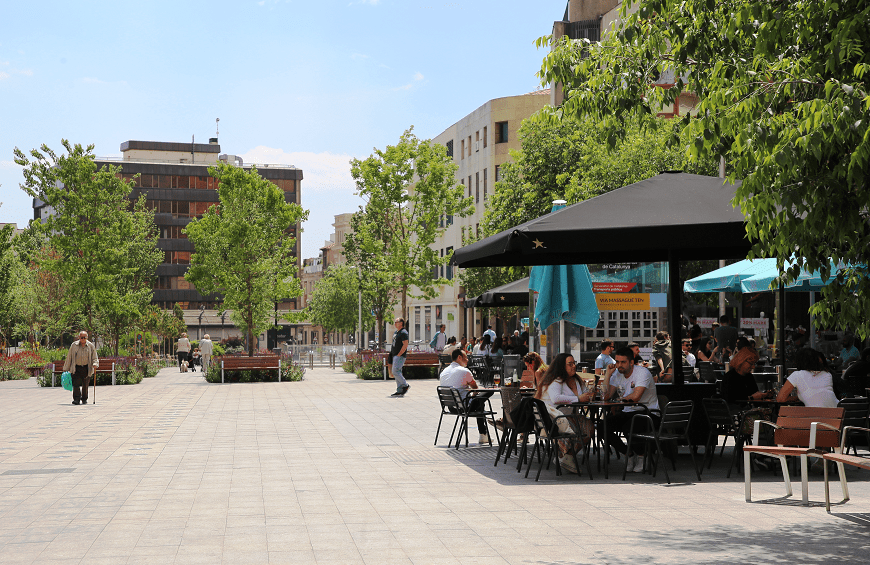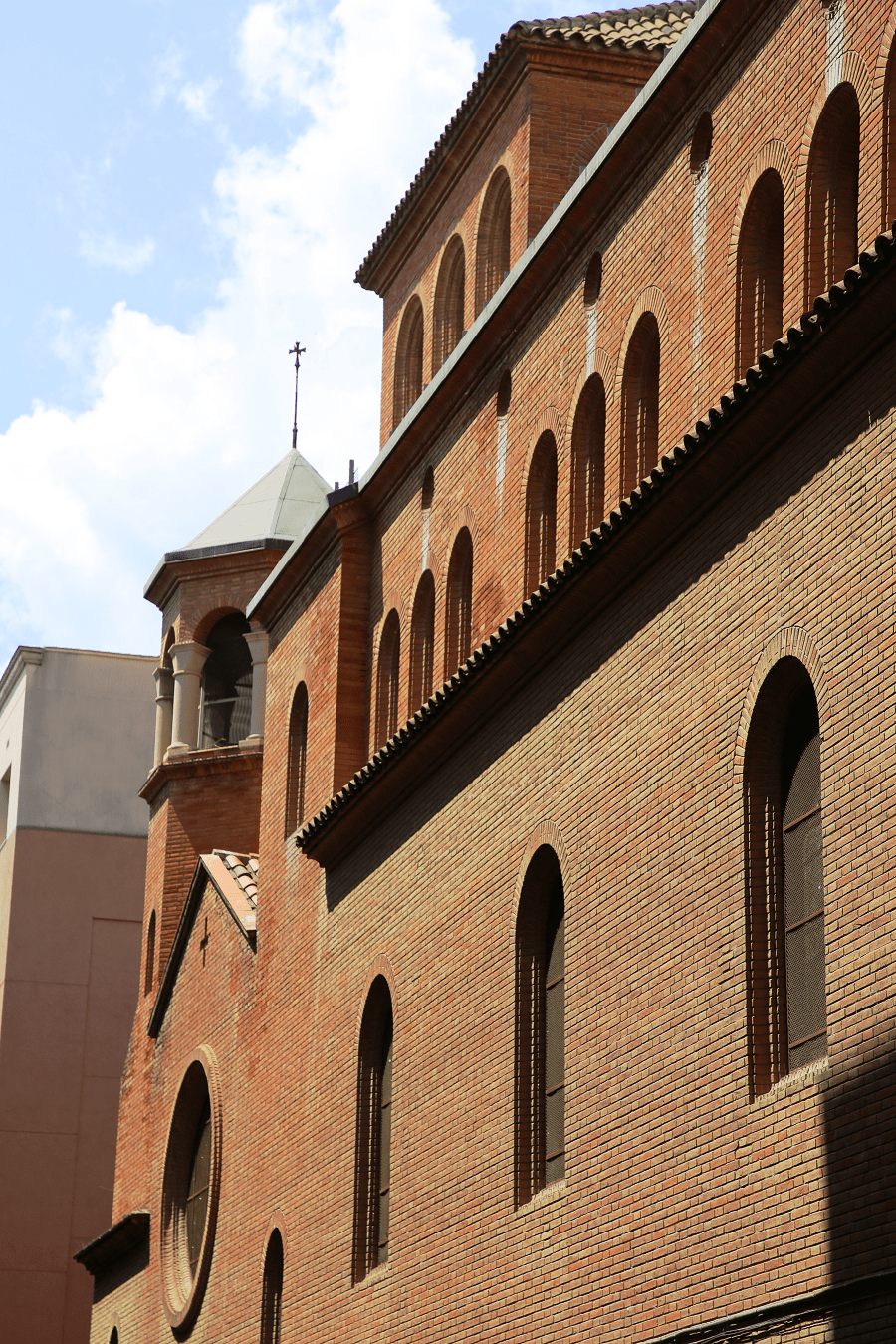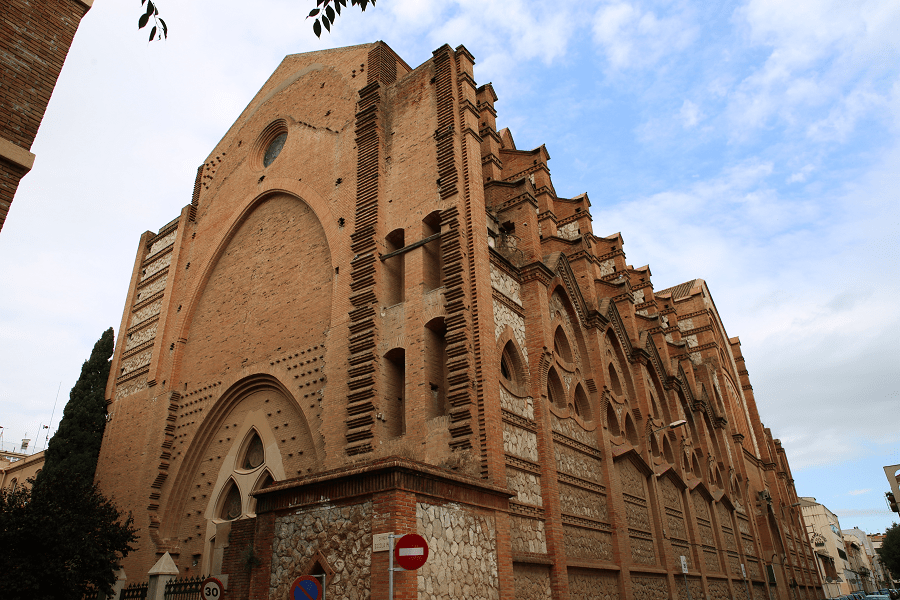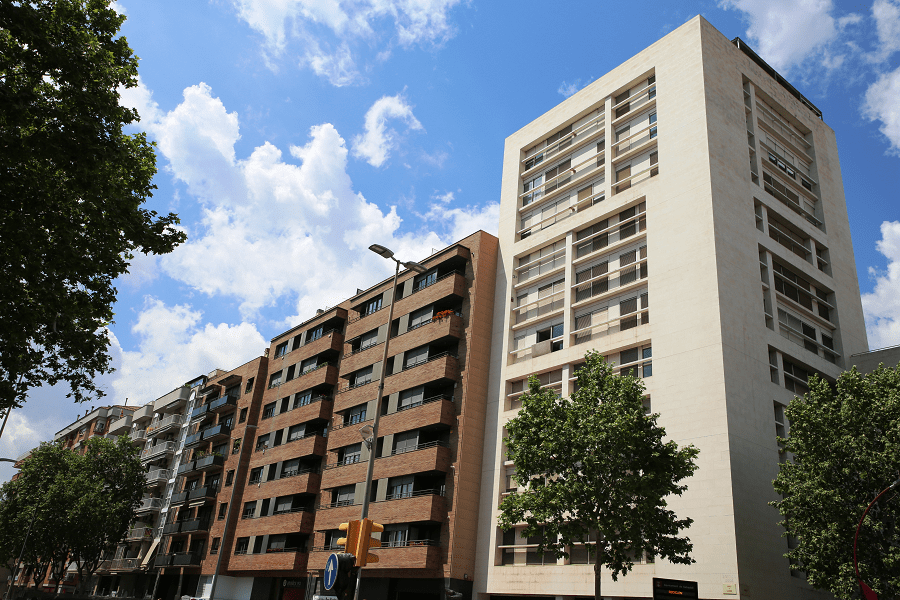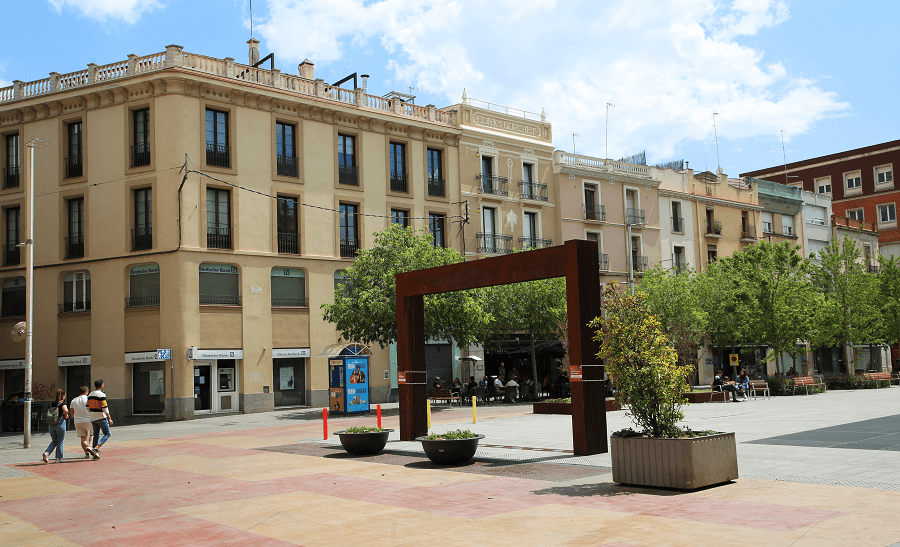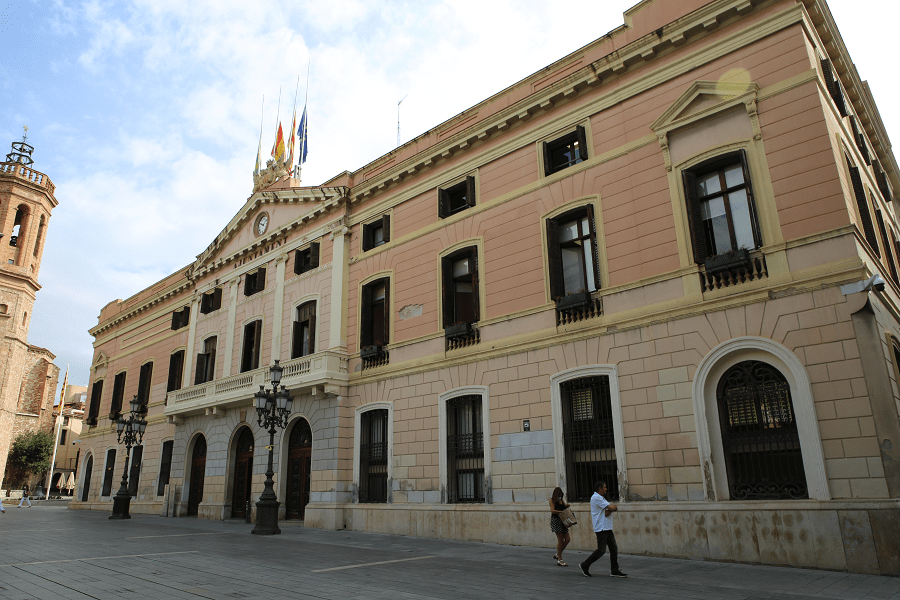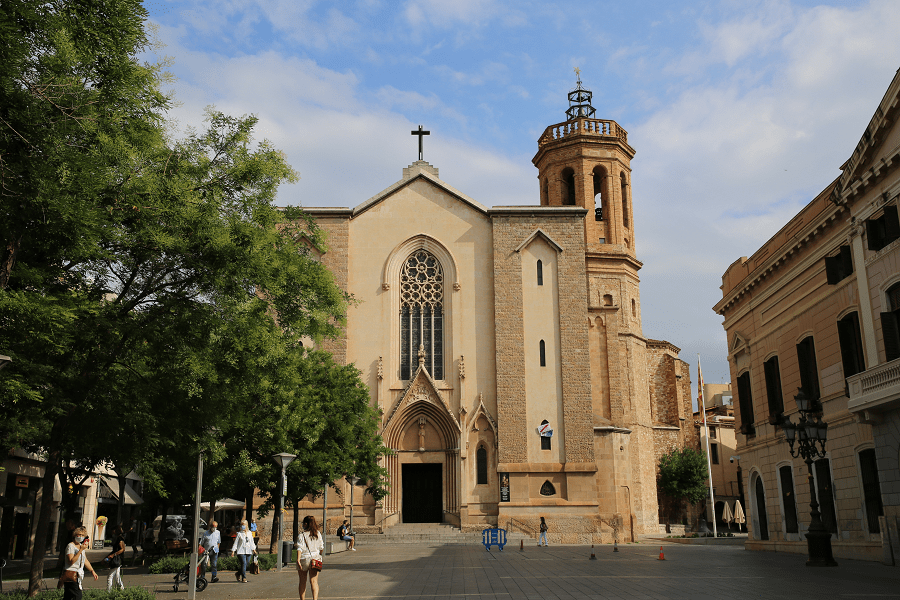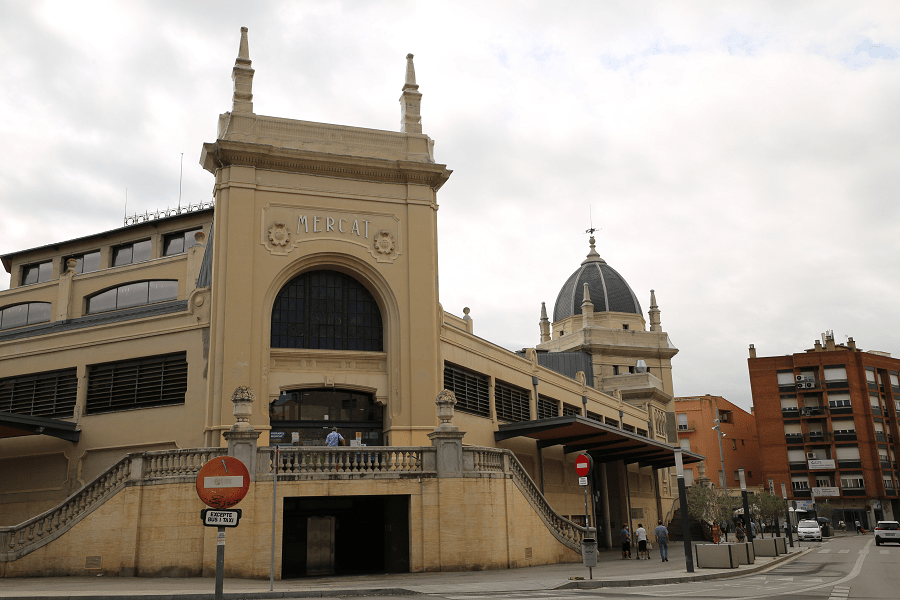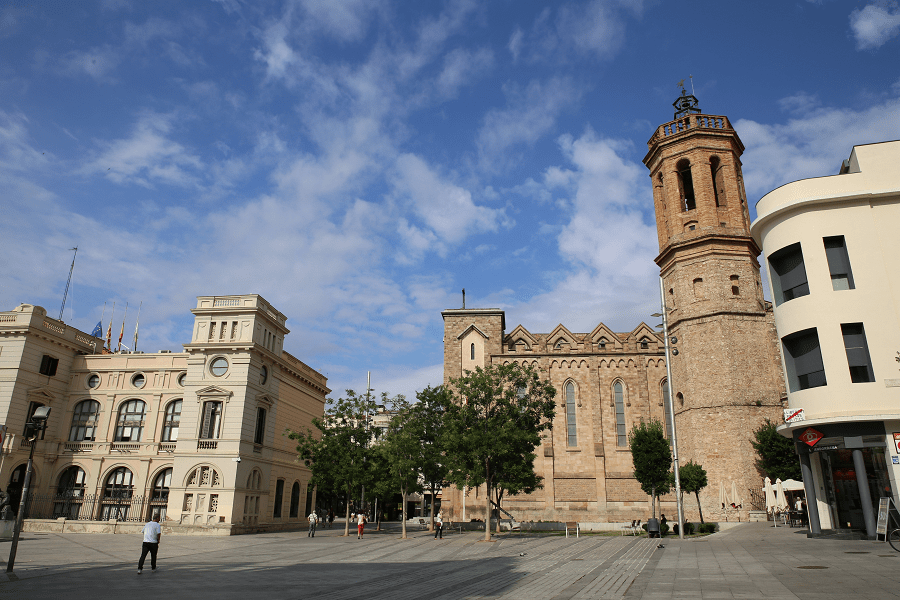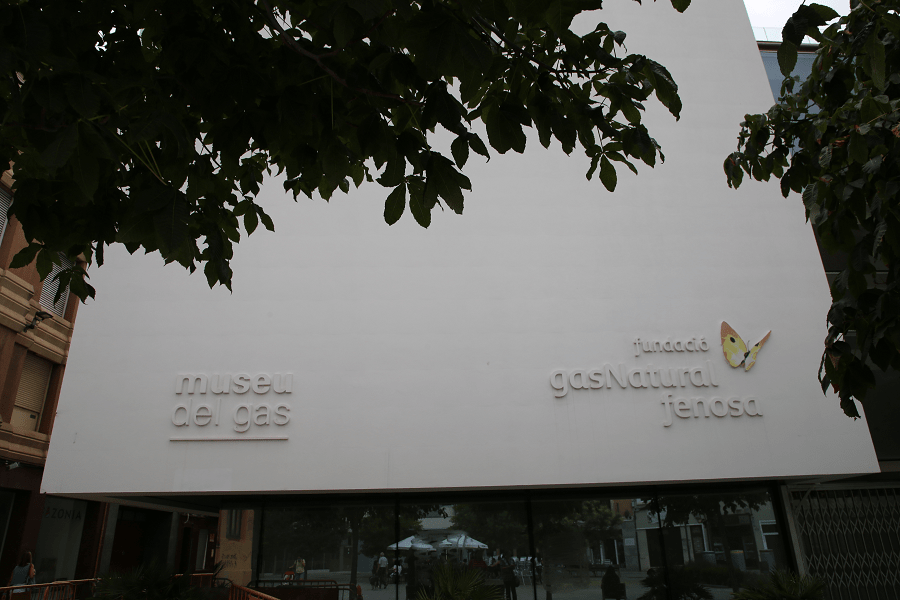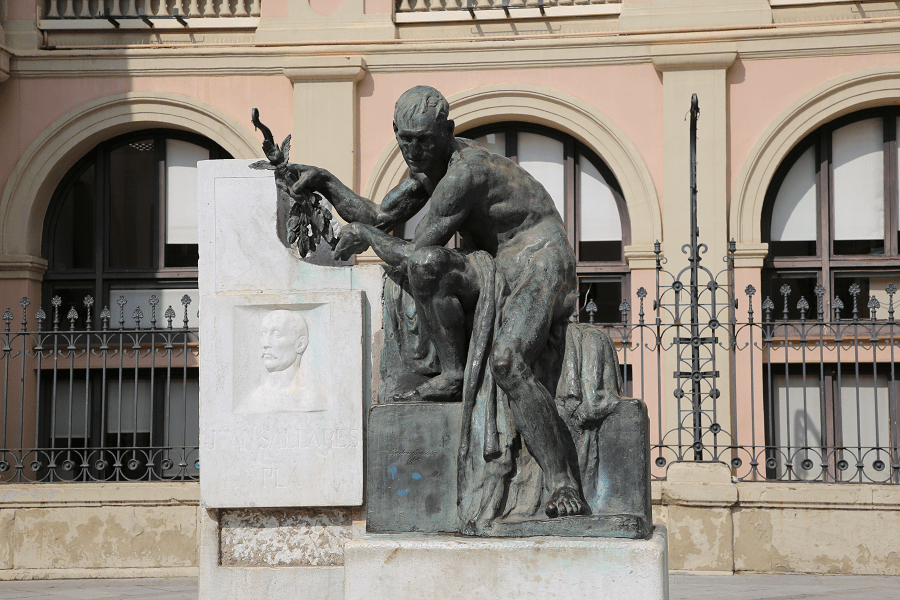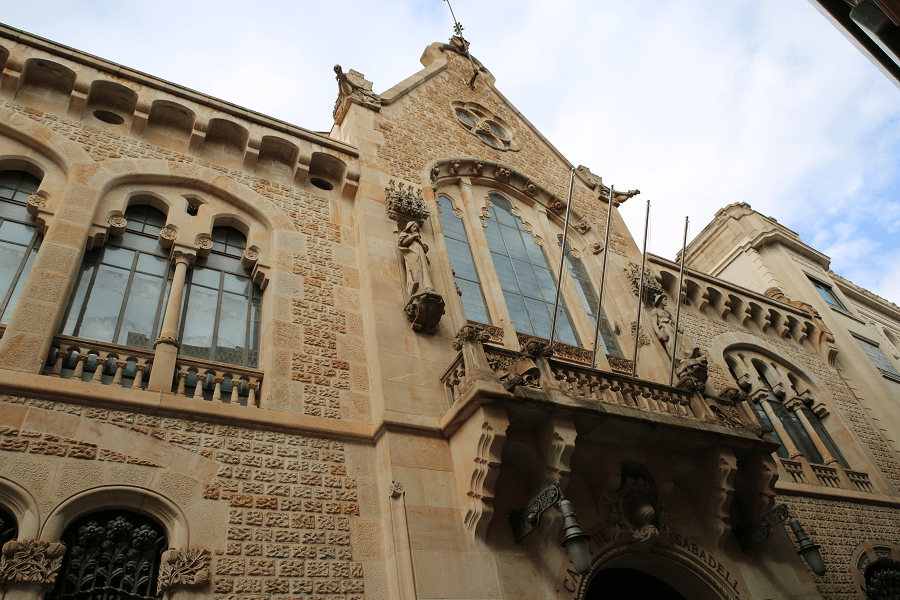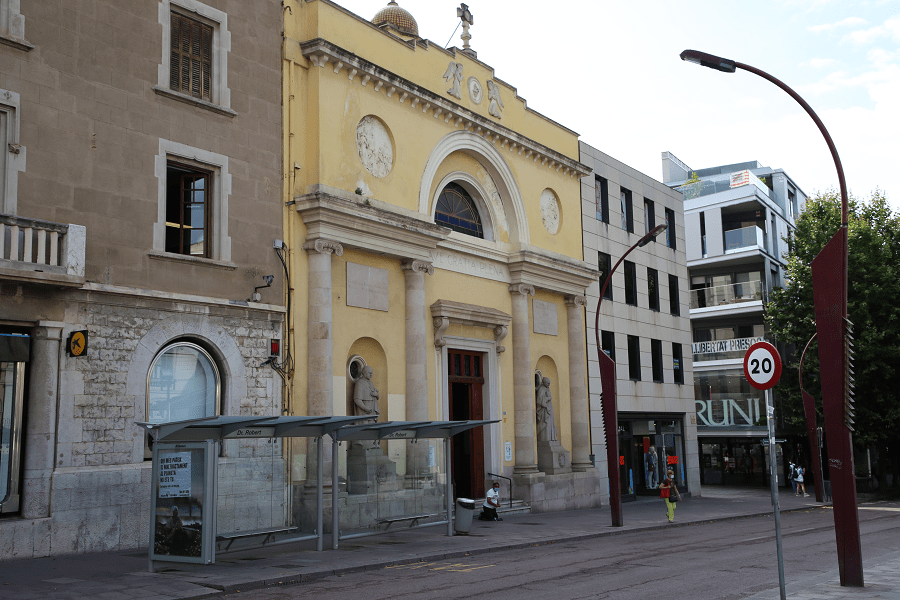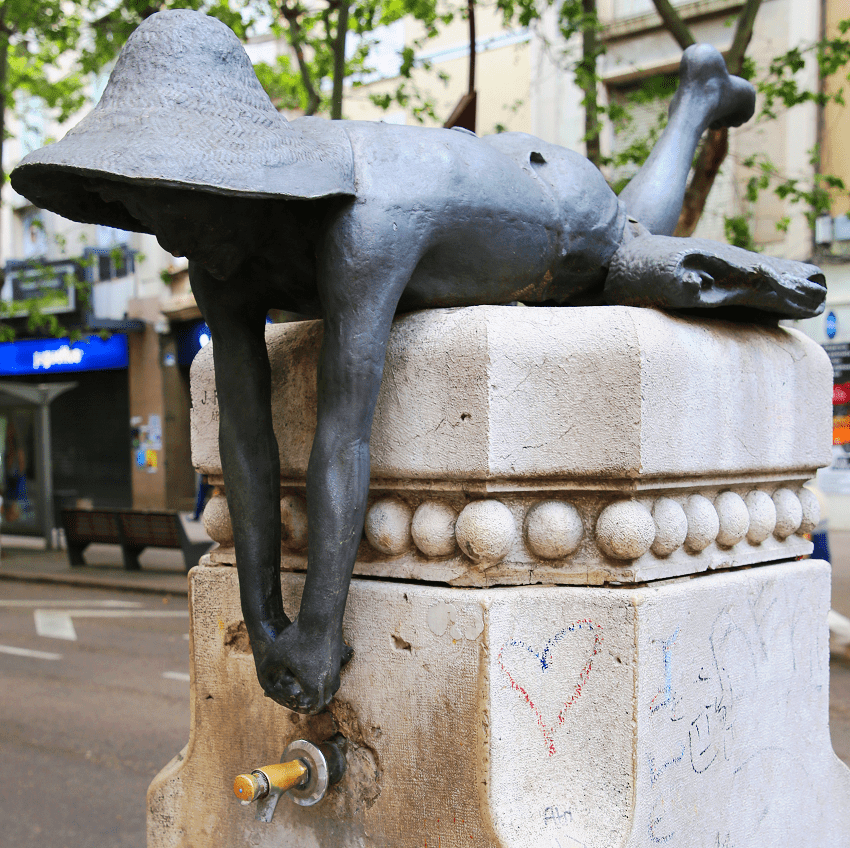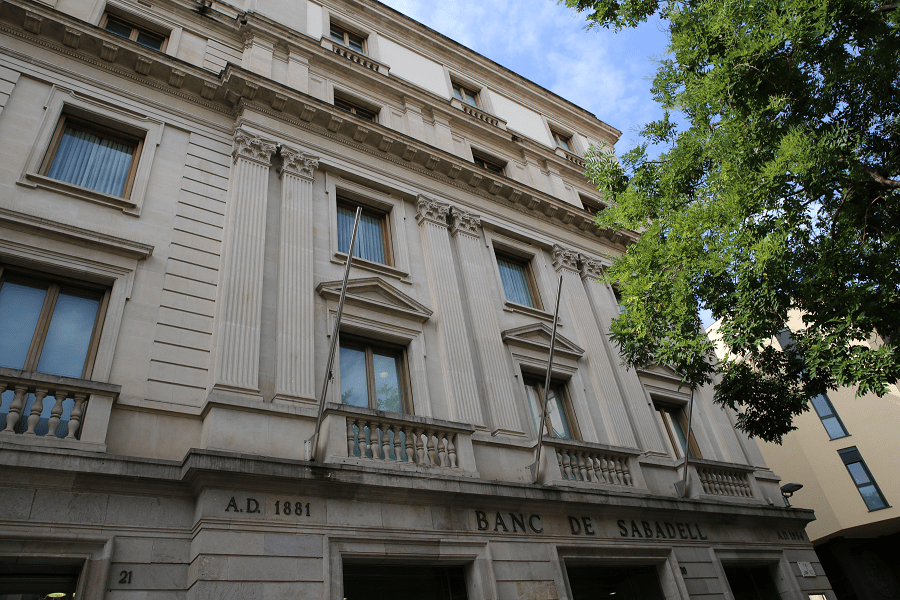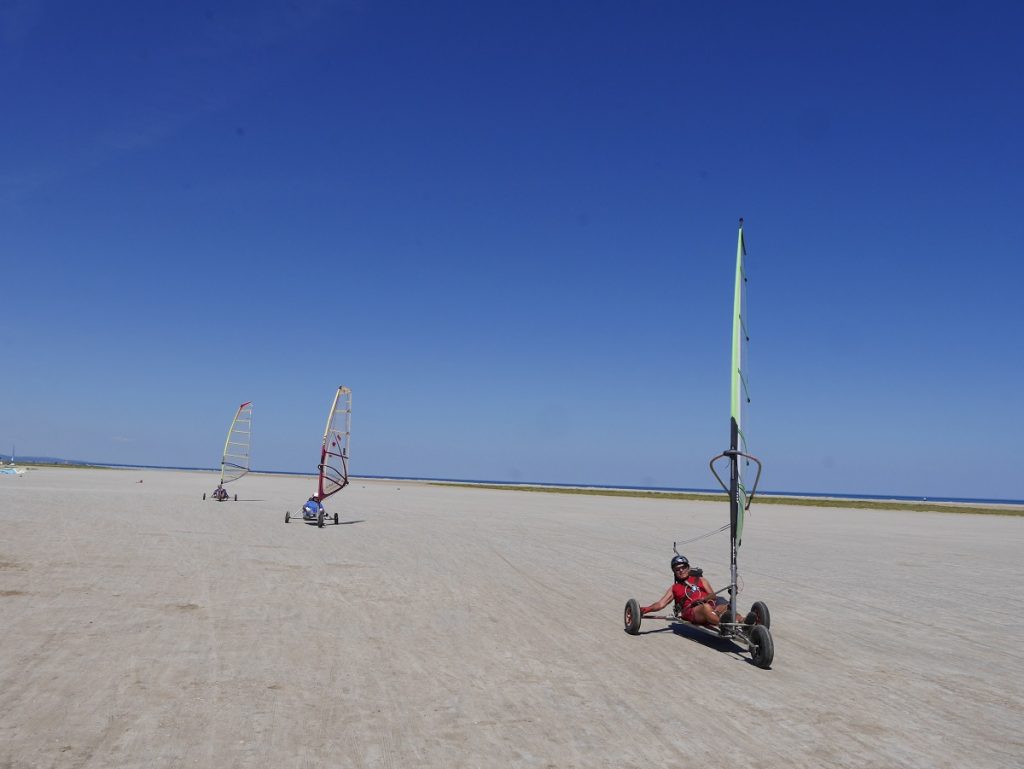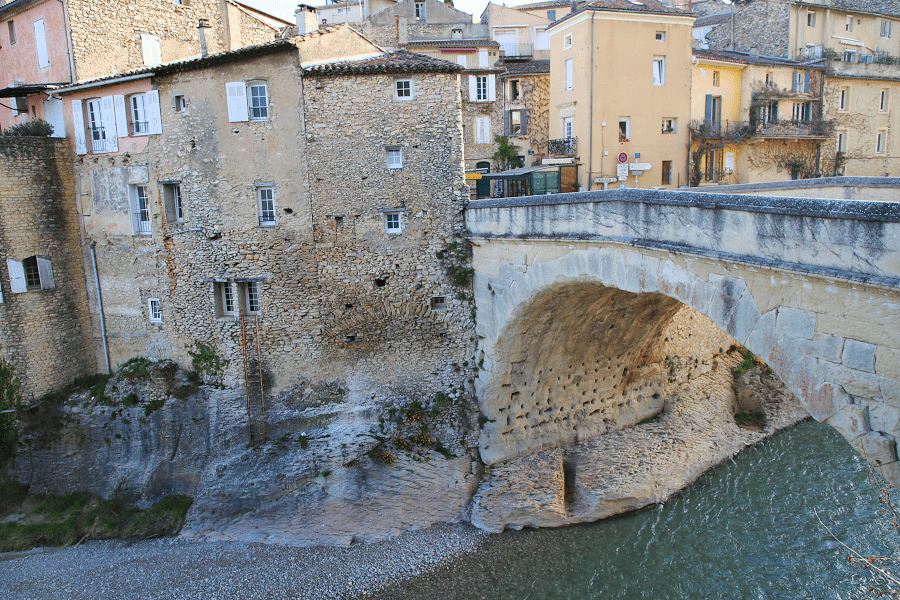Sabadell (cat. Sabadell) is the fifth-largest city in Spain, Catalonia. It is in the south of the comarca of Vallès Occidental and its joint capital (co-capital), on the River Ripoll, 20 km north of Barcelona. Sabadell is located 190 m above sea level.
History
Archaeological remains found around Can Roqueta and Can Gambús indicate that the nucleus that is currently Sabadell was already a village of farmers and shepherds 3,800 years ago. The human presence in the Vallès Occidental region dates to approximately 5000 BC.
The nucleus grew from what is now known as La Salut. Its Iberian inhabitants called it Arraona, and engaged in agriculture, livestock, hunting and fishing. In those days, the region was in the territory of the Laietans. Their houses must have been rectangular and made of stone. Their pottery was not developed with bronze and iron.
The arrival of the Romans in 218 BC began a process of Romanization in which the indigenous Iberian culture gradually assimilated Roman customs. The first Roman settlements in the Vallès Occidental date from the second century BC. The first century, with Augustus as emperor, was a period rich in the construction of villas dedicated to wine production. The Villa de la Salut has traditionally been associated with the Mansion Arragonem. This mansion was a place of provision for travelers traveling the Via Augusta from Rome to Cadiz. Also noteworthy is the Roman Villa of Sant Pau de Riu-sec with important archaeological levels from the republican, imperial and late antiquity.
Middle age
During the Middle Ages, the town developed on the right bank of the river Ripoll. The first buildings were built next to the chapel of Sant Salvador (now the church of Sant Fèlix), documented since 1076. Flour mills were also built there.
The first references to the Sabadell market date from 1111. This market was a meeting place for farmers from all over the Vallès. Known as the Forum Sabatelli and located in the current Plaça Major, this market was the heart of Sabadell’s commercial activity for more than eight centuries.
Roger Bernat de Foix sold the city in 1366 to Eleanor of Sicily, wife of Peter III. With the status of a royal town, Sabadell obtained privileges that revitalized its social and economic life. The king ordered the reinforcement of the walls of Sabadell in 1374. Later, the king returned Sabadell to the city of Barcelona. In the 15th century, the city returned definitively to the Crown, but this did not prevent it from losing almost half of its population, as it remained at about five hundred inhabitants.
The modern age was a period of great territorial expansion for Sabadell; between the 16th and 18th centuries, its area rose from 37,900 m² to 78,272 m². Although the woolen textile industry was dominant, there was also a diversification of industrial activity, with the development of the pottery and paper industry.
Contemporary age
The nineteenth century was a period of expansion for the city’s textile industry. The first steam engine was installed in 1838, and Sabadell was soon filled with Vapors, becoming the main woolen center in Spain. The municipality extended to the current Ronda de Zamenhof and Carrer de Vilarrúbias, and the population multiplied by eleven throughout the century, thanks in part to immigration from Alicante, Murcia and Valencia. To supply this growing population, companies were created to protect the water supply, the railway line was inaugurated in Barcelona, public lighting was installed in the central streets and the first sewers were installed. Eventually, Sabadell obtained the title of city in 1877. Two important financial institutions were also born during the nineteenth century, the Caja de Ahorros de Sabadell (1859) and Banco Sabadell.
Twentieth century and today
During the twentieth century, the population multiplied by ten. In 1904 it absorbed the nucleus of Sant Vicenç de Jonqueres and Sant Julià d’Altura. The city expanded with the incorporation of some settlements such as the High Cross, and emblematic modernist buildings were built such as the Swiss Hotel (1902) or the Water Tower (1918). The industry continues to be based on textiles, although during the 1930s the process of progressive machining of looms took place, and the weight of metallurgy increased. Towards the second half of the century it began to diversify in the tertiary sector. The high immigration of the 1950s, 1960s and early 1970s led to the emergence of many new neighborhoods, where even today a significant percentage of the inhabitants are of immigrant origin.
In the last years of the Franco regime, the city experienced a major economic crisis that raised the need for a new development model for the city. On the other hand, at the end of the century, the aim was to bring order to the uncontrolled growth of the Franco years, providing all the neighborhoods with the necessary infrastructure. The incessant construction of new apartment blocks contrasted with the inauguration of green spaces such as the Parc de Catalunya or the Parc del Taulí (1992). The incorporation of the new neighborhood of Can Llong and the creation of a river park around the river Ripoll are other notable events.
Tourism, sights and what to see
Water Tower
The water tower, from 1918, is an emblematic monument of the city. Built in 1918, the Ripoll water was stored there to distribute it to the population. It operated from 1922 to 1967. It is part of the 100 elements of the Industrial Heritage of Catalonia for its unique reinforced concrete construction. Work by Lluís Homs i Moncusí and Josep Renom i Costa, architects, and Francesc Izard i Bas, industrial engineer. It is one of the symbols of the city.
Duran House
Manor house built in the boulder field between 1578 and 1606 by Feliu Duran, royal procurator and jury of the Consell de la Vila. Man of outstanding prominence in the town. The house combines the stately elements with the characteristics of a farmhouse, and despite being renovated in the s. XVIII, conserves the original structure. On the ground floor, where the Duran family lived, there are what were the domestic rooms, of which are preserved: the noble room, the library and the rooms with the pictorial decoration of the walls and ceiling. The ground floor, dedicated to economic activities related to agriculture and dyes, consists of a large entrance hall, an open-air courtyard with stairs and a magnificent cellar with barrels, a press and cups where the grapes were crushed. It has been a protected heritage asset since 1958 and has been declared a Cultural Asset of National Interest. It has been municipally owned since 2003.
Bell tower of Sant Fèlix
Church of Sant Fèlix, with the bell tower. Construction began in 1724 coinciding with the renovation and expansion of the church of Sant Fèlix, built in the fifteenth century. Baroque in style, it has an octagonal floor plan and four bodies: three made of stone and one made of terracotta. At the top is the common room, the floor of the bells, the clock room and the roof. On the floor of the bells, of the three that exist, two are liturgical and the third, hung in the middle, is hourly; its decoration by the artist Joan Vila Cinca should be highlighted. At the top of the bell tower is a vane angel and two hour bells. On the ground floor was the chapel of El Roser and Sant Joan, which are now gone.
Sabadell City Council
The building was built between 1871 and 1872 and first housed the Escolapios school. In 1880 it passed into the hands of the City Council, which reformed it and later settled there. The entrance lanterns are replicas of those that existed in the early twentieth century.
Caixa Sabadell building
An exponent of Catalan modernism of the early twentieth century. Built in 1915, by Jeroni Martorell. Highlights include the main façade, the Turull courtyard and the assembly hall. Next to the building are gardens, popularly called La Caixa Gardens.
Main Theater
Theater of 1866 recently renovated, one of the oldest in Catalonia. For years it functioned as a movie theater.
St. Nicholas Cemetery
Proposed for Cultural Asset of National Interest.
Forest of Can Deu
The forest of Can Deu is part of the city of Sabadell, it is located in the periurban park of the neighborhoods of Sant Julià and Can Deu. Inside the forest we find the farmhouse of Can Deu with more than five hundred years of history, in 1964 the Caja de Ahorros de Sabadell acquired it to preserve the rich heritage of the rural world of the city and offer the Forest of Can Deu as a space for leisure and conservation of the natural environment. We can also find the hermitages of Sant Julià d’Altura and Sant Vicenç de Verders, the latter being moved to avoid being hung by the Sau reservoir.
La Torre d’en Feu (commonly known as Can Feu Castle) is a romantic 19th century castle located west of Sabadell. Since 2018 it has been owned by Sabadell City Council. Every first Sunday of the month the Can Feu Cultural Association makes a free guided tour outside, at 10 AM.
Font Rosella
In the fourteenth century, specifically in 1367, the first settlers took water from a main spring called the Rosella fountain and a couple of other fountains located between Ca n’Oriac and Can Borgonyó. In memory of the old Rosella spring in 1980, the Sabadell Water Company built a spring at the end of Via Aurèlia street.
Other places of interest
- Antiga estació de ferrocarril
- Bosc de la Concòrdia
- Cambra de Comerç i Indústria de Sabadell
- Casa Arimon
- Casa Brutau
- Casa Ponsà
- Casal Pere Quart
- La Creu de la Creu Alta
- Despatx Lluch
- Edifici del Gremi de Fabricants
- Església de l’Immaculat Cor de Maria
- Església de la Santíssima Trinitat
- Eix Macià
- Gran Via
- Horta de Can Puiggener o del Fruiterar
- Hotel Espanya
- Hotel Suís
- Masia i Molí de Can Garriga
- Masia de Can Mimó
- Masia de Can Pagès
- Masia de Can Llong
- Masia de Ca n’Oriac
- Masia de Can Rull
- Masia de Can Roqueta
- Mercat Central de Sabadell
- Molí d’en Font
- Molí d’en Mornau
- Parc de Catalunya
- Parc del Taulí
- Parc perirubà de la Salut
- Parròquia de la Puríssima Concepció
- Pont de la Salut
- La Rambla
- Roure de la Torre del Canonge
- Santuari de la Mare de Déu de la Salut
- Séquia Monar
- Torrent de Colobrers
- Vapor Badia
- Vapor Buxeda Vell
- Vapor de Ca la Daniela
- Vapor Codina
- Vapor Llonch
- Vapor Pissit
- Vapor Sampere
- Vapor Turull
Museums
Sabadell History Museum
Municipal Museum, located in an old house built in 1859 by the local manufacturer Antoni Casanovas, in 1931 was founded under “City Museum”. Its first collections included archeology, paleontology and art. In 1970 it’s got a new name “History Museum”. It currently has samples of the city’s history from prehistory to the present.
Sabadell Art Museum
Municipal museum, located in the former residence of Pere Turull. Its collection shows the evolution of the city from the late nineteenth century to the 1930s. Permanent exhibitions: The Collection, 1875-1936: Academics of the nineteenth century, Art Nouveau in the 30s and The Turull factory house: Public and private rooms of a bourgeois family of the nineteenth century.
Museum of the Catalan Institute of Paleontology Miquel Crusafont. Inaugurated in 1969. Dedicated to the research and dissemination of paleontological materials, especially fossil vertebrates. The Institute preserves the best collection of fossil mammals in the state and one of the most important in the world. It has a renewed permanent exhibition, an extensive specialized library and several laboratories.
Field Tools Museum
Gas Museum, located in the Plaza del Gas, was inaugurated in December 2011 and is the first museum dedicated to gas and energy in Spain.
Cuisine, food and restaurants
There are more than 10 restaurants of a fairly high quality in the city. Prices are cheaper than in Barcelona. Mostly located within the borders of the Old Town.
Shopping
Shopping in Sabadell is not a priority on the tourist program. Only on weekends city bazaars and fairs, which traditionally take place on weekends or on some public holidays in the main square, can be of tourist interest. At the fairs, in particular, you can come across exclusive products grown in the region. Among them are some well-known wine and cheese brands in Spain.
How to get to?
By train: Renfe Cercanias operates a train from PlaÇa Catalunya to Sabadell Center every 20 minutes, and the journey takes 35 min.
By bus: Sagales operates a bus from Barcelona to Sabadell once daily. Tickets cost 2€ – 4€ and the journey takes 30 min. Moventis also services this route twice daily.
Shortest distances
From Figueres 1 h 25 min (140 km) via AP-7
From Girona 1 h 10 min (97.6 km) via AP-7
From Barcelona 40 min (26.4 km) via C-58
From Madrid 6 hr 22 min (625 km) via A-2 and AP-2
Main information
Area: 37.8 sq. km
Population: 213 645
Languages: Spanish, Catalan
Currency: euro
Visa: Schengen
Time: Central European UTC +1
Coordinates: 41° 32′ 54″ N, 2° 06′ 27″ E




